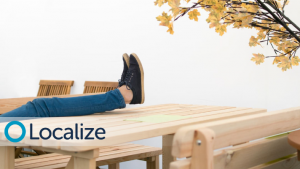The reach of any website has global potential. If you plan on targeting as wide an audience as possible, then you need to create a website that appeals to that wider audience. One of the best ways to do this is through website translation and customizing your website to suit people from a variety of linguistic backgrounds using linguistic tactics.
This may sound obvious, however it’s not as simple as it seems. Different languages follow different grammatical rules, exist in different cultural settings, and sometimes have no literal translation option. Therefore, linguistic tactics are required. Your translated website has to be first understood as if written by native speakers; accounting for subtle nuances, cultural diversity and so on.
What are the Linguistic Tactics used in Website Translation?
Understanding the new market: Before getting started on the translation, it is important to identify your target audience and learn a bit more about their culture and social traits. It is very important to know if your content will harm or offend local sentiment. Only once the linguistic and cultural intricacies of the target audience are fully understood should you proceed.
The translation: The translation should ideally be done by a local who is also fluent in the original language of the website. If this is not possible, then the next option is someone fluent in the target language and who understands the various aspects of the target audience. Websites are more appealing when they are written in what is considered a creative style in that language. Grammar and spellings also have to be impeccable when a website is translated from one language to another.
Website adaptation: Website adaptation is also an important part of the process of website translation. Different languages might have different orientations which need to be accounted for when designing the layout for the website. Certain cultures read text from left to right, while others from right to left. The way the text is oriented will also affect the placement of pictures and link buttons. These too, have to be positioned where they will have maximum impact.
Use of appropriate images: Cultural sensitivities need to be considered when choosing images for a translated website. For example, one culture enjoys having pets in the homes as part of the family, while another culture might consider certain types of animals indoors and on the couch highly inappropriate. Part of website translation is also adapting your images to have a stronger appeal on your target audience.
Testing: Once you have taken all the steps to make sure that your language is impeccable and cultural preferences are adhered to, you need to test. Testing is an absolute must for the website to be successful in a new market. A sample of the intended users needs to be chosen carefully, and a trial run of the website should be conducted. Choose the sample demographic for all types of audiences, for example, youth, young working adults and older millennials. Certain parameters like usability, visual appeal,and accuracy of translation also need to be checked.
Why use Localize?
Website translation is a multistep process and takes a certain level of skill and expertise. At Localize we have the tools you need to effectively translate your website to reach a wider audience and drive the success of your business.







